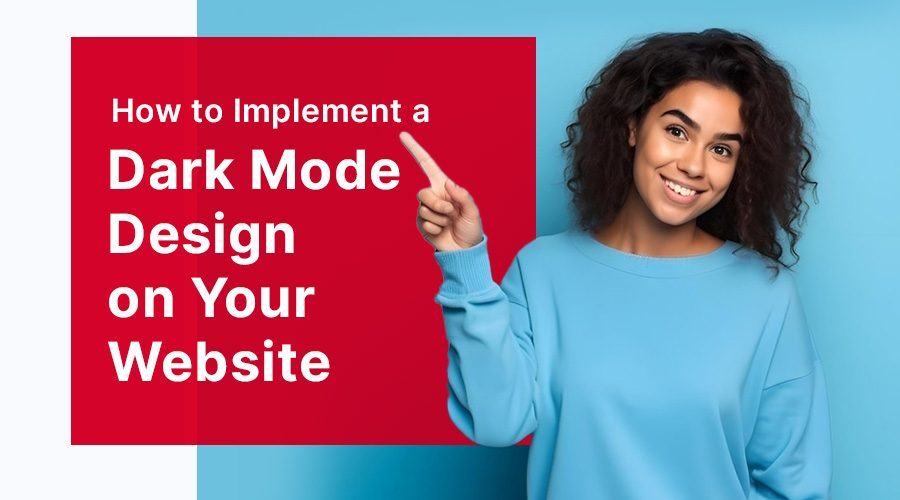Introduction
You know, I was scrolling through my phone the other night, in a dark room, and suddenly – BAM! I opened a website with a bright white background. Boy, did that light slap me in the face! In an instant, it got me thinking, wouldn’t it be cool if websites had a “night mode” or “dark mode” too? That brings us to our chat today. We’re diving deep into the world of dark mode web design, what it’s all about, and how you can implement it on your site. Grab your diving gear, folks, we’re about to plunge into the deep end!
Table of Contents
- What is Dark Mode?
- Benefits of Dark Mode Design
- When and When Not to Use Dark Mode
- How to Implement Dark Mode
- Best Practices for Dark Mode Design
What is Dark Mode?
Think of a classic film noir, with its high contrast, dark shadows, and a mysterious vibe. Now imagine that ambiance on a webpage, and voila! That’s dark mode in a nutshell. It’s a low-light user interface (UI) that uses dark colors, typically shades of black and grey, as its primary background color. It’s like giving your website a sleek black outfit that’s easier on the eyes, especially in low light conditions. Does that sound exciting to you? Because it definitely does to me!
Dark mode is not just about switching from light to dark colors though, there’s more than meets the eye. It’s a balanced blend of aesthetics, readability, and user experience that doesn’t compromise on functionality.
Benefits of Dark Mode Design
“Okay, I get it,” you might say, “but why should I bother with this dark mode thingy?” Well, let’s compare it to choosing between sunglasses on a sunny day and squinting your eyes, trying to avoid the glare. Which one sounds more comfortable? Exactly.
- Improves Visual Ergonomics: Dark mode reduces eye strain in low-light conditions. It’s like having a built-in night light for your website, making late-night browsing a cinch!
- Saves Energy: Yes, you read that right! On OLED or AMOLED screens, dark mode can help save power. Think of it as a small contribution to saving our planet.
- Enhances User Experience: Offering a dark mode option gives users the freedom to choose their preferred viewing mode. After all, choice is king!
When and When Not to Use Dark Mode
“But hey, is dark mode always the way to go?” Well, it’s like asking if you should always wear black. Dark mode works great in certain situations and not so well in others. It’s all about knowing when to use it.
For instance, dark mode shines (pun intended) in low-light conditions or when you’re designing for OLED or AMOLED screens. However, if your website content involves a lot of reading or if your target audience includes older adults, you might want to stick to the traditional light mode. Remember, readability is key, and sometimes, a classic white background just does the job better.
How to Implement Dark Mode
So, you’re sold on the idea of dark mode and you’re eager to get started? Let’s dive in! Implementing dark mode is a piece of cake with CSS media queries and JavaScript. Essentially, you’re creating a style switch that toggles between light and dark themes. Don’t be scared, though. You don’t have to be a coding whiz to get this done. There are plenty of online resources and plugins to assist you. But hey, if you’re still unsure, Webnobby’s got your back!
Best Practices for Dark Mode Design
Like baking a perfect chocolate cake, there are some best practices to follow when designing a dark mode:
- Contrast is Key: Remember, readability is crucial. Ensure there’s enough contrast between the background and text.
- Use Dark Gray Instead of Black: Pure black can cause high contrast. Opt for a dark gray as your primary background color.
- Test, Test, Test: Every device displays colors differently. Always test your design to ensure it looks good across all platforms.
Conclusion
Implementing a dark mode design on your website can be an exciting venture. It can enhance visual ergonomics, save energy, and improve the overall user experience. However, remember to use it wisely. Dark mode isn’t for every scenario or every audience.
If you’re feeling unsure or if coding isn’t your forte, no worries! At Webnobby, we’ve got a fantastic team of web design wizards who’d be more than happy to help you out. After all, our motto is to make your web journey as smooth as a dolphin’s skin!


